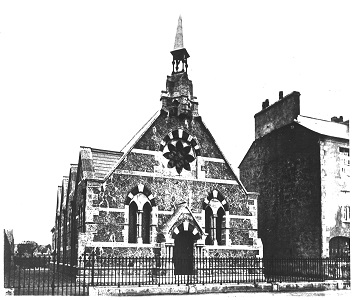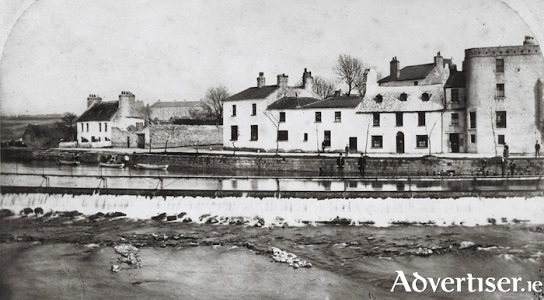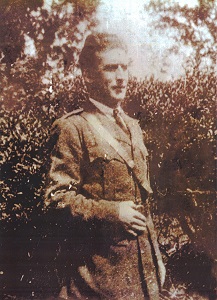Old Galway
Galway and the Great War 1914-1918

by Tom Kenny
On August 4th 1914, Lt Col Henry Jourdain, Commander of the Connaught Rangers in Renmore Barracks, Galway, received mobilisation orders which changed the lives of thousands of families throughout the city and county. Urgent appeals for recruits were sent out. Hundreds of young men began arriving from all over Connacht. Temporary military camps were set up outside the barracks to cater for the recruits.
SALTHILL CITIZEN’S ASSOCIATION

by Tom Kenny
The first concerted move to improve Salthill (that I know of) was in 1882 when funds were collected locally and the Salthill Improvement Company was set up to improve the resort. The prevention of pollution was a priority. The company had its ups and downs and eventually died off. The first meeting of the Galway Urban District Council in 1925 had a deputation from Salthill who listed proposed improvements, In the 1930’s a Salthill Development Committee was set up.
COLUMBAN HALL

by Tom Kenny
The Columban Hall is described as a bizarre-high-victorian building with a gabled facade of opus incertum with a small porch, polychrome arches to the windows, a star shaped west window and a curious chunky top-knot. It was originally built as a Congregational Church designed by Raffles Brown and completed in 1863. Our photograph (courtesy of the National Library) was taken just a few years later.
CHRISTABEL PANKHURST IN GALWAY

by Tom Kenny
Our image this week is of a newspaper advertisement for an extraordinary meeting that took place in the Town Hall one hundred years ago today.
A report of the event stated “It is not often that as fashionable and representative an audience is attracted by any programme to the Town Hall as that which assembled on Wednesday night to hear an address from Miss Christabel Pankhurst in support of the women’s suffrage movement. Christabel was born in Manchester and, with her mother Emmeline and her sisters Sylvia and Adela, set up the Women’s Social & Political Union whose aim was to achieve votes for women. It was a militant organisation with the slogan “Deeds not Words”. It was quite a coup getting her to Galway.
Waterside, c1885

by Tom Kenny
Some 100 years before this photograph was taken, most of the area we are looking at would have been under water, the river covered much of what is Woodquay today. Most of the people who lived in the area would have been small farmers or fishermen, their houses (outside the city walls) made of blocks of stone, often with moss stuffed into the crevices and a roof covered partly with straw, partly with turf. The river provided a rich source of food, though in the city, the fishery, from the Salmon Weir to the sea, was privately owned.
PATRICK O’BRIEN, VOLUNTEER.

by Tom Kenny
Patrick was born in Waterdale, Claregalway in 1895. He joined the volunteers in 1914, and did drilling and training in arms for active operations.
In 1916, he saw active service at Carnmore Cross, at the Agricultural Station, Athenry; Moyode and Limepark. He was with the Claregalway Company (The Galway Brigade) under the command of Nicholas Kyne. He was involved in a shooting engagement, firing at a party of RIC during an attack in Carnmore on the Tuesday and at another party of RIC at Athenry on the Wednesday.
AN TAIDHBHEARC, 90 YEARS A’GROWING

by Tom Kenny
On December 3rd, 1927, a group of people met with the idea of setting up an Irish Language Theatre in Galway. The committee elected were Dr. Séamus Ó Beirn, President; Seán Mac Giollarnáith, Treasurer; Liam Ó Briain and Séamus Luibhéid, Secretaries; An tAthair Pádraic Ó hEidhin, Liam Ó Buachalla, Síle Ní Chinnéide, Tomás Ó Raghallaigh, Mícheál Ó Droighneáin, Donal Ó Riordáin and Tomás Ó Máille.
NEW DOCKS ROAD

by Tom Kenny
This photograph was taken from the far side of the docks c.1900 and shows New Docks Road in the distance and Bonham Quay on the right.. None of the buildings we see were on the 1820 map, most were built in the mid-nineteenth century outside the old city walls and many of them were once part of the Burbidge or Chambers estates.
.png)